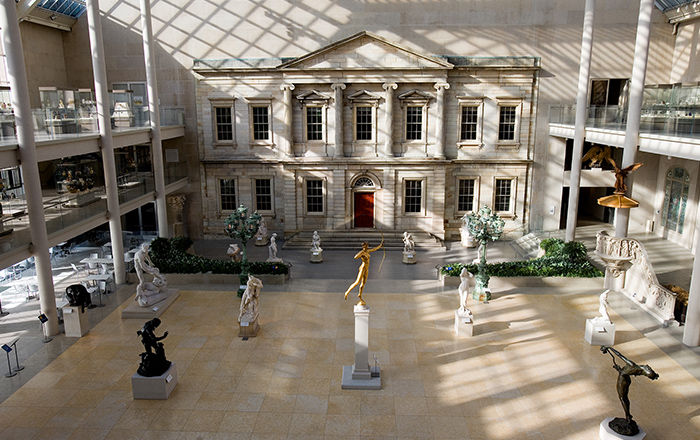“Bramble” tray
Manufacturer Chesapeake Pottery American
Manufacturer D. F. Haynes & Co.
Not on view
Majolica, earthenware mass-produced using molds and then hand painted with brightly colored glazes, was one of the most popular products in America in the 1870s and ‘80s, a period that became known as the “majolica craze.” Its imaginative forms, elaborately modeled shapes, and brightly painted decoration fulfilled the American middle-class desire for Aesthetically minded but affordable utilitarian and decorative ceramics. Following majolica’s origins and domination by the Staffordshire potteries in Britain in the regions, American manufacturers, often immigrants from England, began to produce their own wares and supply local demand.
Chesapeake Pottery, purchased by D.F. Haynes in 1882, was founded by two Staffordshire potters in1880, Under Haynes’s leadership, the Chesapeake Pottery was responsible for making Baltimore “a leading center of American Majolica.” Prior to his involvement in the production of majolica, Haynes worked as a wholesaler of imported British majolica, becoming intimately aware of the essential relationship between designer, manufacturer, and consumer in the production of majolica. At the same time, Haynes became known for his promotion of art education and design, working with the Maryland Institute Schools of Art and Design which brought accomplished and educated students to his firm, including a noteworthy number of women.
This majolica tray in the “Bramble” pattern, decorated with a pattern of branches, leaves, berries, and flowers over a textured background, underscores the influence of British ceramics, notably that of Wedgwood & Sons. on American design. The design is modeled directly on the Wedgwood pattern of the same name, first introduced in 1868, and which remained in production for several decades.
